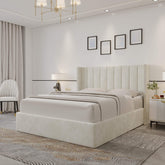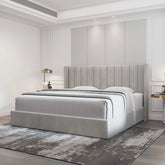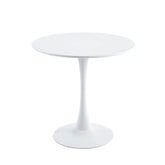Is MDF a Good Choice for a Kitchen Dining Table? Pros, Cons & What to Know
If you're shopping for a kitchen dining table or upgrading your dining space, chances are you’ve come across tables made from MDF. It's often priced lower than solid wood, comes in stylish designs, and is widely available in today’s furniture market. But the question remains: Is MDF actually a good material for a dining table?
Let’s dive into what MDF is, its pros and cons, and whether it’s the right fit for your space — whether you're furnishing a dining room table for a small room or looking for a sleek modern dining table on a budget.
What is MDF?
MDF (Medium Density Fiberboard) is an engineered wood product made by compressing wood fibers and resin under high pressure. Unlike solid wood, MDF is smooth, uniform, and doesn't have natural grain or knots. It’s commonly used in furniture, cabinetry, and shelving because of its affordability and versatility.
✅ Advantages of MDF Dining Tables
If you're considering an MDF dining room table, here’s why it might be a smart choice:
1. Affordable & Budget-Friendly
One of the biggest advantages of MDF is the cost. MDF kitchen dining tables are significantly more affordable than solid wood alternatives, making them ideal for renters, first-time homeowners, or anyone furnishing on a budget.
If you're furnishing a dining room table for a small room, where space is already limited, MDF gives you a chance to save on material cost and spend more on other decor or functional pieces.
2. Smooth Finish & Stylish Designs
MDF has a uniform surface that allows for ultra-smooth finishes. It’s often coated with laminates, paint, or veneers to mimic high-end woods like walnut or oak — which means you can enjoy the aesthetics of a modern dining table without the hefty price tag.
Many kitchen dining tables with a minimalist or high-gloss finish are actually made from MDF.
3. No Warping or Cracking
Because MDF doesn’t have natural grain like real wood, it’s less likely to warp or crack due to temperature or humidity changes. This makes it a reliable material, especially for indoor use and climate-controlled spaces.
4. Lightweight for Easy Mobility
Compared to solid wood, MDF dining tables are usually lighter, which is a bonus if you move furniture often, live in an apartment, or enjoy rearranging your layout from time to time.
❌ Disadvantages of MDF Dining Tables
While MDF has benefits, it also has some limitations that you should consider:
1. Not as Durable as Solid Wood
While MDF is dense and strong, it’s still not as tough as solid wood. It’s more prone to dents, scratches, and surface damage, especially if exposed to heavy daily use or rough handling.
If your kitchen dining table doubles as a workspace, kids’ play area, or hosts regular dinner parties, MDF may show wear over time.
2. Sensitive to Moisture
MDF can swell or deteriorate if exposed to excessive moisture or standing water. Spills should be wiped up immediately, and coasters or placemats are a must.
That said, most MDF dining room tables come with a laminated or sealed surface that protects them under normal use — just avoid placing hot pots or wet dishes directly on the surface.
3. Shorter Lifespan
Unlike a solid oak or walnut table that could last decades, MDF tables generally have a shorter lifespan. They’re great for 3–7 years of regular use but may not stand the test of time like hardwood furniture does.
So, Who Is an MDF Dining Table Best For?
An MDF kitchen dining table is ideal if:
- You’re on a budget but still want modern aesthetics
- You live in a rental or temporary home
- You need a compact dining room table for a small room
- You want a lightweight and easy-to-move table
- You’re okay with replacing the table after several years of use
However, if you’re looking for a long-term investment or a high-traffic family dining space, a solid wood table might offer better durability.
MDF vs. Solid Wood: Quick Comparison
|
Feature |
MDF |
Solid Wood |
|
Price |
More Affordable |
More Expensive |
|
Design Flexibility |
High (laminates, paint) |
Natural wood grain look |
|
Durability |
Moderate |
High |
|
Weight |
Lighter |
Heavier |
|
Water Resistance |
Low (if unsealed) |
Moderate to high |
|
Lifespan |
3–7 years |
10–30+ years |
Final Thoughts
MDF can be a smart, stylish, and budget-conscious choice for a kitchen dining table — especially if you’re designing around a compact space or just want a sleek modern dining table without spending too much. Just be mindful of how you use it and where it’s placed.
If you’re shopping for a dining room table for a small room, MDF options offer plenty of design flexibility and functionality at a fraction of the cost of hardwood.
Looking for a well-made, stylish MDF dining table that doesn’t compromise on looks?
Explore our curated collection at Velets.ca — crafted for modern living, small spaces, and smart budgets.






